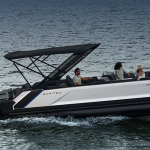While big-box retailer Best Buy operates in a completely different world from the Bicycle Outdoor or SnowSports industries, the company is implementing some radical new strategies that deserve some attention. Under the Guidance of Consultant and Columbia School of Business Professor of Finance and Economics, Larry Seldon, Best Buy has decided that roughly 20% of their customers are wrong for business, that is.
Best Buy estimates that 100 million of its 500 million customer-visits each year are unprofitable.
These customers buy loss leader products and re-sell them on eBay for a profit. These customers purchase big-ticket items, like flat-screen TVs, then apply for manufacturers rebates, and return the item only to re-purchase the same item at an open-box discount. These customers pull sales and specials off the internet and force the company to match prices, often at a loss.
Many consumers consider this to be savvy shopping, and Best Buys policies are partially at fault, but the chain does not want to back-pedal on its low-price guarantee or its return and warrantee policy. Likewise it does not want to “fire customers.”
Instead, the company is identifying and labeling its customers according to profitability, and training staff to recognize the profiles of profitable versus unprofitable customers. Professor Seldon calls this his “Angel-Devil Strategy,” and Best Buy has rolled it out in 100 stores this past season, and plans to implement it chain-wide this coming season. At the heart of Seldons theory is the argument that retailers should view their business as a portfolio of customers, not a portfolio of product lines. So far, the pilot stores have been operating with a one or two percentage point higher operating cost, but in targeting only the customers that turn a profit for the store, Best Buy hopes to boost margins to cover this expense.
Seldons theory has its roots in stock valuation. The Professor Emeritus conceived a methodology for valuing retailers stocks by analyzing the profile of its customer base. After spending several weeks explaining his theory to Best Buys top executives, the company began analyzing its own customer base. The company discovered that the majority of its profits came from 20% of its customers, and on the other side of the coin, 20% of its customers were unprofitable.
Open-box discounts certainly do not exist on Bicycle Outdoor, or SnowSports retail floors, but several national and regional chains are learning the power of loss-leaders to attract customers, and the outdoor industry in particular is well-known for its warranty and service reputation. With blogs and websites like fatwallet.com giving tips on how to force retailers to sell at a loss, perhaps everyone should be watching out for “devils.”















